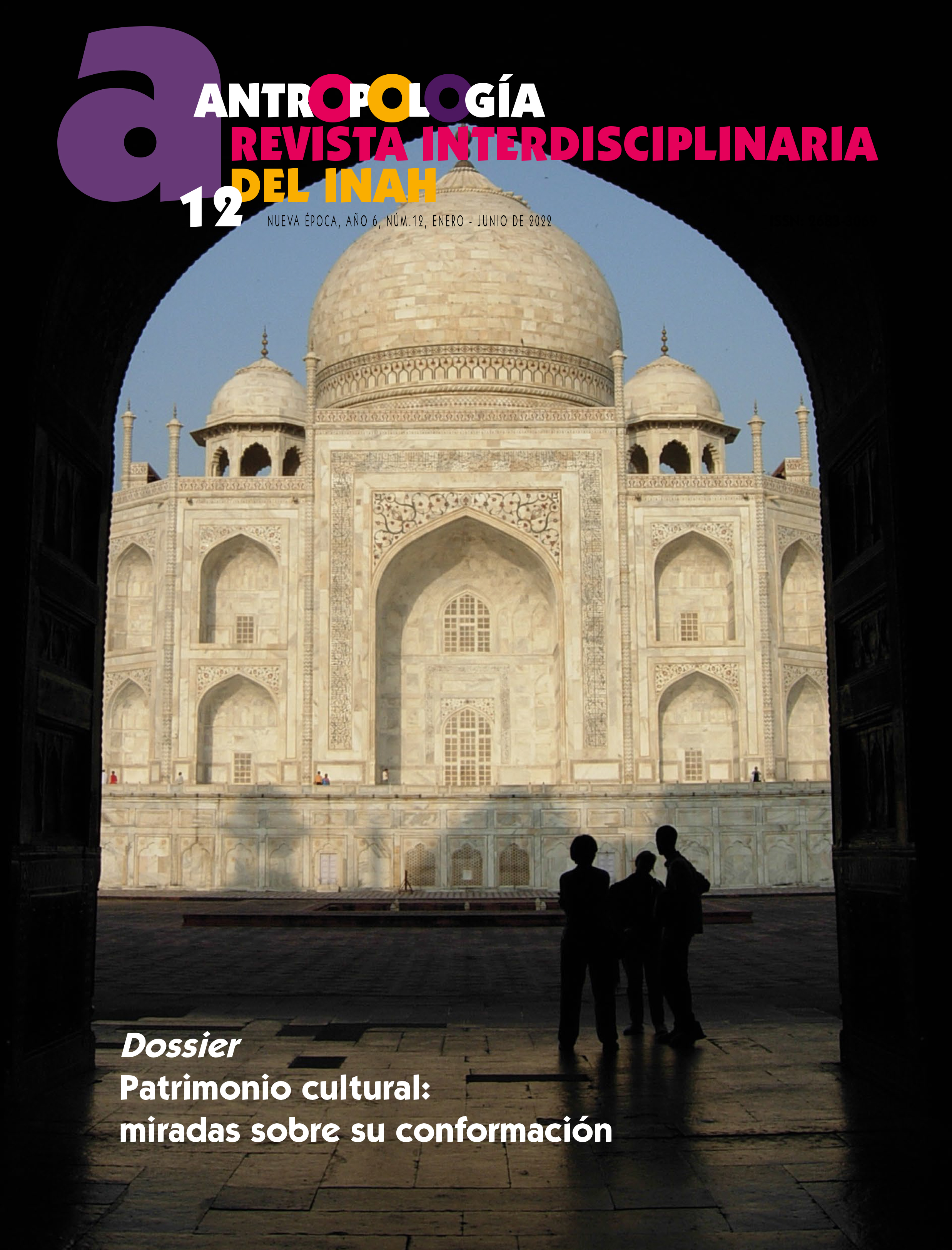Publicado 2023-09-30
Palabras clave
- Heritage, tradition, landscape, conservation, continuity, tangible, intangible, traditional knowledge.
Cómo citar
Resumen
The paper reflects on the notions of heritage based on the philosophical traditions rooted in Hinduism, the predominant religion in India. Heritage (Virasat) is considered separate from tradition (Parampara). The paper deliberates on the spatial, temporal, and experiential notions of heritage. While the space is manifested through symbolic representations on macro and micro levels, tangible heritage gets created and recreated through cyclic notions of time, giving the process a much broader cultural significance than the product. The experiential dimension contributes towards linking the tangible and the intangible in various modes of comprehension, and thus materiality has much lesser significance than the spirituality of heritage. This understanding also has an implication for the traditional approach to heritage conservation that emphasizes all the rituals attached to the regeneration of a particular heritage in contrast to merely preserving the ‘dead’ ruins. The paper further dwells into the main challenges confronting this heritage when seen in a static manner and with a growing disconnect between the tangible and the intangible. The failure of the ‘Western’ conservation approaches with a focus on material preservation has therefore made us reflect on the living heritage approach for conservation that advocates enabling continuity and evolution and controlling change to protect the essence of heritage that is deeply connected to the self.
Descargas
Referencias
- CHAPAGAIN, Neel Kamal (2013), “Contents and concerns in Asian heritage management”, in Kapila D. SILVA and Neel Kamal CHAPAGAIN (eds.), Asian Heritage Management, Kindle, Routledge.
- DAGENS, Bruno (2017), Mayamata: An Indian Treatise on Housing Architecture and Iconography, 2nd edition, New Delhi, New Age Books.
- ELIADE, Mircea (1991), The Sacred and the Profane, Princeton, Princeton University Press.
- GALTUNG, Johan (1979), Methodology and Development, New York, Harper.
- GASTNER, Theodor H. (1954), “Myth and Story”, Numen, vol. 1, no. 1, pp. 184-212.
- GUPTA, Divay (2003), “Three types of landscape”, Unpublished Paper.
- HEEHS, Peter (ed.) (2002), Indian Religions: A Historical Reader of Spiritual Expression and Experience, London, C. Hurst & Co.
- JIGYASU, Rohit (2005), “Disaster: A ‘Reality’ or Construct? Perspectives from the ‘East’”, in Ronald W. PERRY and Enrico L. QUARANTELLI (eds.), What Is a Disaster? New Answers to Old Questions, Bloomington, Xlibris, pp. 49-59.
- _____ (2013), “Using traditional knowledge systems for post-disaster reconstruction – Issues and challenges following Gujarat and Kashmir Earthquakes”, Creative Space, vol. 1, no. 1, pp. 1-17.
- KAWATHEKAR, Vishakha (2020), Legal Frameworks for the Protection of Built Heritage in India, New Delhi, Copal Publishing Group.
- LABADI, Sophia (2010), “World heritage, authenticity and post-authenticity”, in Sophia LABADI and Colin LONG (eds.), Heritage and Globalization, London, Routledge, pp. 66-84.
- LEVY, Robert I., and Kedar Raj RAJOPADHYAYA (1991), Mesocosm: Hinduism and the Organization of a Traditional Newar City in Nepal, Berkeley, Oxford, University of California Press.
- LOWENTHAL, David (2003), The Heritage Crusade and the Spoils of History, Cambridge, Cambridge University Press.
- LUXEN, Jean-Louis 2004), “Reflextions on the Use of Heritage Charters and Conventions”, Conservation: Getty Conservation Institute Newsletter, vol. 19, no. 2, pp. 4-9.
- MALIK, Subhash Chandra (1990), Modern Civilization: A Crisis of Fragmentation, New Delhi, Abhinav Publications.
- _____ (1995), Reconceptualising the Sciences and the Humanities: An Integral Approach, New Delhi, Manohar Publishers.
- MASON, David V. (2009), Theatre and Religion on Krishna’s Stage: Performing in Vrindavan, New York, Palgrave Macmillan.
- MEHROTRA, Rahul (2008), “Negotiating the Kinetic and Static Cities: The Emergent Urbanism of Mumbai”, in Andreas HUYSSEN (ed.), Other Cities, Other World: Urban Imaginaries in a Globalizing Age, Durham / London, Duke University Press, pp. 205-218.
- POULIOS, Ioannis (2012) “Discussing strategy in heritage conservation. Living heritage approach as an example of strategic innovation”, Journal of Cultural Heritage Management and Sustainable Development, vol. 4, no. 1, pp. 16-34.
- SAVYASAACHI (2017), “What Is Worthy of Conservation”, in Hriday Reflections, Ahmedabad, ICOMOS India, CEPT, pp. 27-30.
- SENGUPTA, Nirmal (2007), “Introduction”, in Nirmal SENGUPTA (ed.), Economic Studies of Indigenous and Traditional Knowledge, New Delhi, Academic Foundation, pp. 21-30.
- SILLITOE, Paul (2006), “Introduction: Indigenous knowledge in development”, Anthropology in Action, vol. 13, no. 3, pp. 1-12 <https://doi.org/10.3167/aia.2006.130*302> (accessed on 10 November 2021).
- SINGH, Rana P. B., and S. Rana PARVEEN (2016), “Kashi and Cosmos: Spatial Manifestation and the Five Pilgrimage Journeys of Banaras”, International Journal of Religious Tourism and Pilgrimage, vol. 4, no. 6, pp. 1-15 <https://doi.org/:https://doi.org/10.21427/D75Q7N> (accessed on 10 November 2021).
- SINGH, Rana P.B. (1993), “Cosmic layout of hindus sacred city, Varanasi”, Architecture and Compartment/Architecture and Behaviour (Association de La Revue) Special Issue: Lay-out of Scared Places, vol. 9, no. 2, pp. 239-249.
- SINHA, Amita (2020), Cultural Landscapes of India: Imagined, Enacted and Reclaimed. Cultural Landscapes of India: Imagined, Enacted and Reclaimed, Pittsburgh, University of Pittsburgh Press.
- SMITH, Laurajane (2006), “The uses of heritage”, Public History Readings. <https://edisciplinas.usp.br/pluginfile.php/2946833/mod_resource/content/1/uses of heritage Laurajane Smith.pdf> (accessed on 15 November 2021).
- TEUTONICO, Jeanne Marie, and Frank MATERO (2003) Managing change: sustainable approaches to the conservation of the built environment, Los Angeles, Getty Conservation Institute.
- THAPAR, Romila (1987), “Cultural Transactions and Early India: Patronage”, Social Scientist, vol. 15, no. 2, pp. 3-31.
- TOM, Binumol (2013), “Jiirnnoddharana. The Hindu philosophy of conservation”, in Kapila D. SILVA and Neel Kamal CHAPAGAIN (eds.), Asian Heritage Management Contexts, Concerns, and Prospects, New York, Routledge / Taylor & Francis, pp. 35-48.
- UNESCO (2014), UNESCO culture for development indicators: Methodology Manual, Paris, UNESCO.
- VATSAYAN, Kapila (1994), Concepts of Space: Ancient and Modern, New Delhi, Abhinav Publications.

